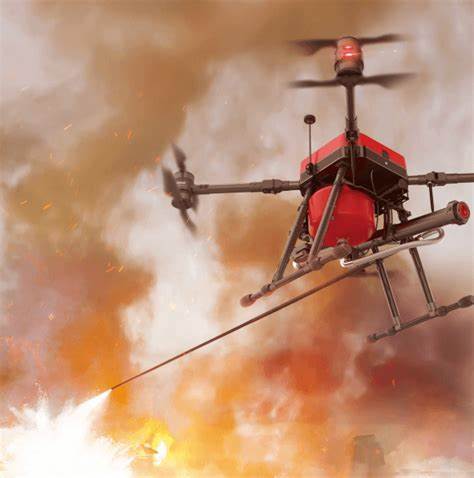In recent years, the application of drone technology in the field of firefighting has garnered significant attention from scientists, managers, and firefighting organizations. This development not only provides effective solutions but also opens up new avenues for prevention and response to large-scale fires, especially in the context of climate change and the increasing frequency of wildfires.

1. Monitoring and Situation Analysis
- Intelligence Technology Application: Modern drones are equipped with HD cameras, thermal sensors, and image recognition technology, which help provide clear images of the fire situation. According to a study by the Vietnam Institute for Research and Development, using drones can reduce the time required to assess damage and detect hotspots by up to 70% compared to traditional methods.
- Data Integration: Drones can collect data from multiple sources, such as satellites and ground sensors, to create a comprehensive picture of the fire situation. This data integration helps firefighting teams plan their actions more accurately, thereby minimizing damage and protecting human lives.
2. Firefighting Agent Spraying
- Quality and Precision: Drones can be equipped with high-precision firefighting agent spraying systems, helping to minimize waste and enhance effectiveness. A study from the International Drone Association indicates that using drones for agent spraying can reduce the amount of chemical needed in a firefighting operation by 50%, while also saving about 30% of the time compared to traditional methods.
- Accessing Difficult Areas: Hilly or remote areas can be very challenging for fire trucks to access, but drones can easily reach these locations to spray fire fighting agents directly. This capability enhances response effectiveness even in the most challenging emergency situations.
3. Remote Collaboration
- Coordinating Multiple Drones: A drone system can operate in swarms, with each drone assigned a specific task, such as one drone for surveillance, another for spraying agents, and another for relaying information back to the command center. A study by NASA indicates that using multiple drones simultaneously can improve monitoring capabilities by up to 60%, providing fire fighting teams with timely and accurate information.
- Improving Response Times: The coordination of multiple drones helps shorten response times, allowing firefighting teams to make timely and effective decisions. According to data from the Federal Emergency Management Agency (FEMA), using drones can reduce response times from 30 minutes to under 10 minutes in emergency situations.
4. Promising Future
- Innovative Potential: With the development of AI and machine learning, drones in the future could automate many monitoring and firefighting processes, reducing reliance on human intervention. For instance, a study from the Massachusetts Institute of Technology (MIT) suggests that the application of AI could enhance the ability to predict and detect fires by up to 90%.
- Technology Improvements: Advances in battery and sensor technology will allow drones to operate longer and more efficiently. Forecasts indicate that by 2030, lithium-ion batteries will be replaced by new battery technologies that will double the flight time of drones, thus expanding their capacity to respond to wildfires.

